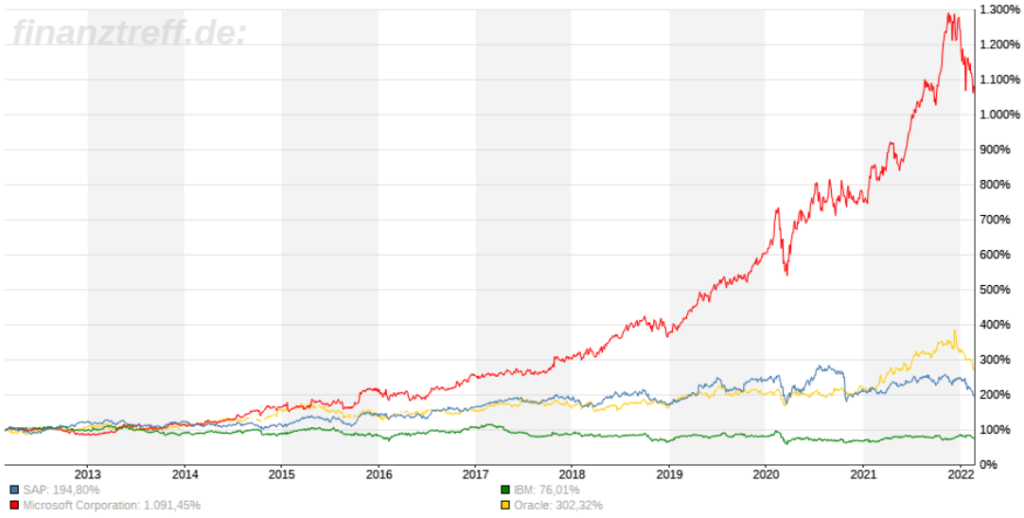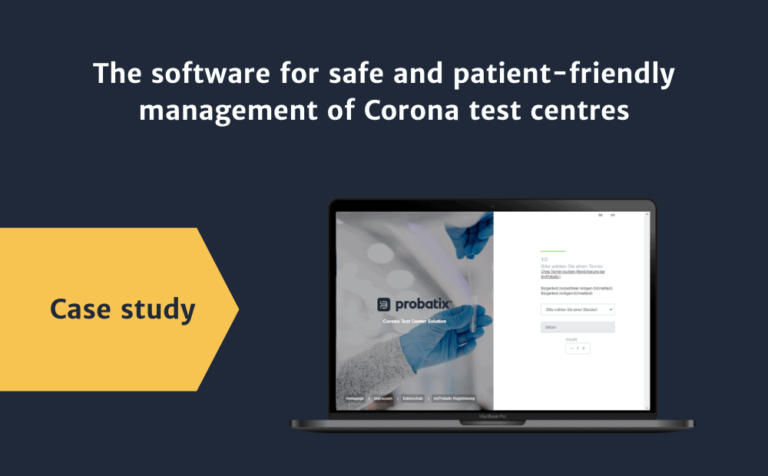In contrast to start-ups, established companies have enormous advantages when it comes to successfully implementing digital business models. In this article, we show what these advantages are and how they can be used. Nevertheless, a successful digital orientation requires a change in the way a company is managed. We have outlined the seven most important new ways of thinking here.
Many companies assume that a gradual innovation process is sufficient to exploit the possibilities of digitalisation. However, new players are showing established companies that radical innovations and upheavals in the business model are needed to remain in the market. Prominent examples are
- The automotive industry, which is being demonstrated by Tesla.
- SAP, which almost missed the leap to the cloud and now has to contend with agile competitors like Salesforce and Celonis.
- Nokia’s management, which failed to recognise the smartphone trend.
- the German mail order company Quelle, which was ousted by Amazon because it did not consistently implement digitalisation.
The mail-order company Otto, on the other hand, digitised more consistently and is the second-largest e-commerce retailer in Germany – albeit far behind Amazon.
Even Microsoft was on the brink. Satya Nadella, who became CEO of Microsoft in 2014, recognised the problems in time and completely turned Microsoft around. Away from traditional computing and towards the cloud. Away from the old product and towards a service-oriented business. The reward: significant sales growth and a share price that has increased fivefold since Nadella took office. The increase is all the more astonishing when compared to SAP, Oracle and IBM.

Established companies have valuable advantages over start-ups: Market knowledge, customers and partners
Many start-ups fail because they do not know the market and customer needs. Ideas that make sense in the PowerPoint presentation and the business plan do not make it to the market, either because the customers are not (yet) digitally ready, because the start-up has overlooked legal hurdles or because the business model was simply developed without taking into account customer needs.
Established companies, however, know their customers and their needs. They know the legal requirements. Now they just have to use these advantages.
Established companies must learn to think anew in order to develop radical innovations
Many companies rely on gradual innovation. So far, this has been sufficient to become more efficient, to satisfy current customer needs and to remain profitable. What is missing, however, are real gamechangers that bring new, decisive customer benefits and open up new markets – comparable to Tesla’s e-cars, Apple’s iPhone and smartwatch, platforms like the App Store, Amazon, Zalando or Hartmann easyCare, the neobank n26, Zoom, SaaS providers like Celonis or Personio, 3D printers, SpaceX’ reusable rockets, Flixbus, … to name just a few.
Many of these digital disruptions are system independent and run in the cloud. SaaS (Software-as-a-Service) or platform solutions are the most common models here.
New thinking 1: Disruptive innovation and profitability do not go together easily – example Flixbus vs. Postbus
Successful companies are usually profitable. Expenditure on investments and innovations is within a range that does not jeopardise profitability.
Radical innovations often start from scratch, usually in a niche. And they cost money. Often radical innovations are not profitable for several years. Many companies, even corporations, their shareholders, investors and banks cannot stand this cost pressure.
One example: in the context of the liberalisation of long-distance bus transport in Germany and an amendment to the Passenger Transport Act in 2013, several start-ups, including Flixbus, but also Deutsche Post AG founded scheduled bus companies together with ADAC. It was a David versus Goliath battle, with David or Flixbus winning here too. The venture capitalists of Flixbus were aware that it would take time before Flixbus could be profitable. However, the disproportionately larger Deutsche Post AG and its shareholders were not prepared for Postbus to be unprofitable for several years and squeeze Deutsche Post AG’s profits. After three years, Postbus finally merged into Flixbus. Flixbus became the undisputed number 1 in Germany, expanded successfully into new markets and was profitable before the Corona pandemic, according to its own figures. If the Post, its shareholders and investors had not just thought from quarter to quarter, Deutsche Post AG might have built a solid second leg.
This example shows that disruptive innovations or new digital business models need courage to take financial risks and, above all, time. To reduce the risk and increase the chances of success, a company needs the right partners.
New thinking 2: Don’t do everything alone, but break new ground with (new) partners
As described in point 1, disruptive innovations cost money. And there is of course the risk that the innovation or digital business model may not work and be implemented as planned. To reduce the risks, it is a good idea to work with one or more strategic partner(s).
- The new digital solution can be developed jointly with a customer or supplier. The costs are shared, the common market is bigger than just your own.
- Many companies have little or no experience in developing digital solutions. In this case, it is a good idea to work with a technological partner to implement the digital solution efficiently and with little risk.
- A venture capitalist. There is no reason why a company cannot turn to venture capitalists in a similar way to start-ups. Often, these investors offer contacts to other strategic partners through their networks. In addition, as already listed above, established companies have valuable advantages that make them interesting for investors.
- Working with or investing in a start-up can also be advantageous. You don’t have to invent everything yourself.
- There are also numerous programmes that promote the digitisation of companies. With the help of a search in the BMWK’s funding database, you can find many public funding programmes from the federal government, the states and the EU.
New thinking 3: Involve employees from the start, communicate openly with them and show them perspectives
New ideas or digital business models are rarely created at the management’s desk. It is more promising if employees are given the freedom and budget to discuss and try out new ideas across departments. An MVP, a Minimum Viable Product, is sufficient to test a digital idea with selected customers. An MVP contains only the most elementary functions so that customers can test a digital product. An MVP goes well beyond the functionalities of a prototype. With a properly set up MVP, a company can already achieve the first sales. The tests with selected customers provide valuable information that flows into the further development of the digital solution. The advantages of an MVP are that it can be quickly adapted to feedback and that the investment is kept within limits. If the company does not have its own resources to develop digital products, it is a good idea to build the MVP together with a technology partner.
When introducing digital products or business models, open communication with employees is crucial. Digital products and business models can mean a departure from previous products and the previous business model. A change that can be scary. Therefore, it is important that the management shows the employees the digital vision of the company. Employees must see digitalisation as an opportunity for the company and for themselves. In this respect, it is crucial to consistently bring the employees along. Consistently also means that the company must invest in further training and retraining of its employees, especially in times of a shortage of skilled workers. Bosch, for example, wants to retrain its 80,000 employees who are dependent on combustion technology for electromobility.
Dr Daniel Werner, CEO of the software developer Venture Leap adds: “Of course, not every company has to turn its established business model upside down. A digital business model can also be built up as a second pillar. What is crucial is that the management does not run the new company like the previous one. A new venture that develops and builds a disruptive innovation must be much more agile. It must be able to work independently of the ‘parent company’ to a large extent. Nevertheless, it is important to create synergies at the crucial points so that both forms of organisation benefit.”
New thinking 4: Ambidextrous organisational form
For innovation and efficiency to work side by side, they must both operate independently and be interconnected. The keyword here is: Ambidextrous organisations. Ambidextry translates from the Latin as “ambidexterity”, that is, being able to use both the left and the right hand equally well.
Ambidextrous leaders must be able to optimise the current business model, work on innovations or have them worked on at the same time, be well networked into the management of the units and communicate the vision of the company to their employees. Charles A. O’Reilly and Michael Tushman studied how ambidextrous organisations can function successfully back in 2004.
Important findings are:
- Research and development units or the new digital unit are strictly separated from the core business.
- Innovation hubs can set up their processes, structures and working methods as they need them.
- The established units can continue to focus on their core business and further optimise their processes.
Important here: Executives from both units are closely networked so that, for example, the innovation unit can draw on expertise, talent and financial resources from the core business.
New thinking 5: You don’t have to be the first, but you have to keep your eyes open and above all: recognise trends.
In 2007, Steve Jobs and Apple introduced a disruptive innovation: the iPhone. It displaced the classic mobile phones with buttons and became the basis of smartphones as we know them today. Nokia, which had a market share of over 50% in mobile phones during the 2000s, did not believe in the touch smartphone principle. They continued to rely on their button phones – and disappeared from the market. Yet Nokia would have had enough time to recognise the trend towards smartphones and pick it up in order to retain market share. As this Statista infographic shows https://de.statista.com/statistik/daten/studie/173056/umfrage/weltweite-marktanteile-der-smartphone-hersteller-seit-4-quartal-2009/, manufacturers such as Samsung, Huawei, Oppo, Xiaomi and others launched smartphones years later and gained significant market share. The following points were and are decisive for this success:
- The new manufacturers use a high-quality component that is particularly important to customers: the camera.
- Compared to established smartphone manufacturers, they offer their devices at a lower price-performance ratio.
- Instead of developing their own operating systems, the manufacturers integrated their smartphones into the largest, freely available platform: Android. This has the advantage for customers that they can easily supplement and upgrade their phones with a variety of apps.
New thinking 6: A common, industry-wide platform creates many advantages
Shared platforms with common data standards between industries or sectors support innovation. In short: collaboration supports innovation. However, it is not necessary for one company alone – comparable to Google’s Android – to develop and build this platform. Dr Daniel Werner is convinced: “A data platform should be developed in cooperation with several companies. This way, the needs of several players are taken into account from the beginning and more experience is gained. This experience then goes into the further development of the platform as more companies join and use it. A good example of a joint platform is Catena-X, the data room of the automotive industry.
New thinking 7: A digital solution is never finished
Established (industrial) companies usually think in terms of series. A product is developed, equipped with permanently installed software, launched on the market and replaced after X amount of time by a new product with new software.
Tesla once again shows that it can be done differently. Many components installed in Tesla cars receive new, improved functionalities through software updates. The other approach: instead of developing software for hardware, Tesla develops hardware for software.
We know from our everyday lives that software is never really finished. Our computers, laptops, smartphones, tablets, etc. are constantly getting new updates that make them better and more secure. When a company develops a new software or platform, it should be aware that a digital solution means continuous improvement.
For this reason, it makes sense to develop the first version of a software as an MVP – a Minimum Viable Product. The goal of MVP development is to quickly, cheaply and iteratively turn innovative ideas into a marketable product. Read here how an MVP can accelerate digital innovations
https://venture-leap.com/en/the-leap/accelerating-innovation-with-an-mvp/
Another success factor: the choice of technological partner
Another challenge in the development of a digital solution is the developers. Many companies have no or only small teams of developers who are busy developing software for existing products.
However, to go digital from scratch, they need experienced teams of developers to develop, for example, a SaaS (Software-as-a-Service) or a platform. These developers are few and far between and must first be assembled and coordinated.
For this reason, many companies rely on cooperation with a software agency at the beginning of their digital reorientation. The following points, among others, should be considered when choosing an agency.
- Is the agency a good sparring partner or does the agency have experience in questioning and building digital products and business models?
- Does the service provider have experience in building the desired digital solution, for example a SaaS or a digital platform.
- Are security and data protection considered from the beginning?
Does the agency have building blocks to build digital products as efficiently as possible rather than developing them from scratch every time? - Can the client have all open data available at any time to continue the project with their own employees or another service provider?
How digitalisation can be successfully implemented varies from company to company. The decisive factor is that the management approaches and implements it consistently. There is still time to use the existing advantages. Start-ups, competitors or big tech are already waiting in the wings.




